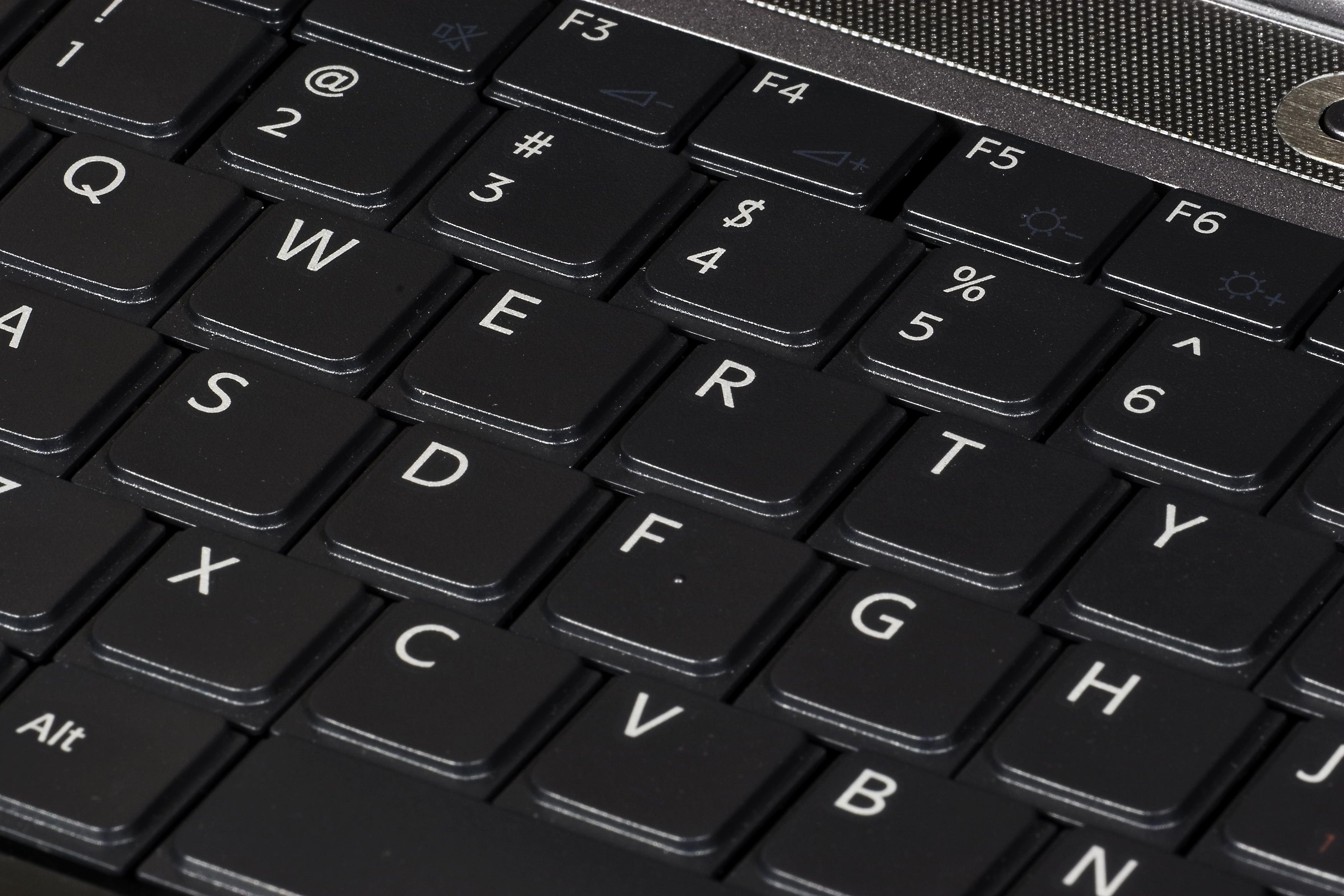QWERTY

Image Source: Wikimedia.org
QWERTY is the name for the commonly used keyboard on computers. It takes its name from the first six letters in the upper left of the keyboard. Its layout was transferred to computer keyboards from electric typewriter keyboards. It was transferred to electric typewriter keyboards from manual typewriters… which didn’t have “keyboards”. They just had keys.
Computer keyboards are totally electronic. Hitting a key activates electrons. Electric typewriters came in various forms, but most later ones had little balls covered with reversed letters that struck carbon paper ribbons against paper to imprint images when the keys were struck.

Image Source: Blokeish.com
Manual typewriter keys controlled little arms with reversed letters on them. As you hit the keys, the little arm would swing into action, smacking the same carbon paper image against paper. The difference here being that the action was totally controlled by the force of your fingers hitting the keys. Typing this way was hard work and resulted in tired fingers. But if you were good, you could get fast. And if you were too fast, the keys would jamb as in the image to the left. In college I used an electric typewriter with strike arms. As a left-hander, I often caused jambs because commonly used letters are mostly on the left… slowing most right-handed people down.
The QWERTY design is based on a layout designed by C. Latham Sholes in 1874 for the Sholes and Glidden typewriter which was later sold to Remington. It was designed to minimize keyboard clashes. (source) It is often cited as one of the successes of open standards. Its adoption across platforms and manufacturers makes it possible to sit in front of almost any keyboard and type without having to learn a new layout. In the early days of computers, there was a move to switch to Dvorak keyboards. The Dvorak keyboard was arranged to minimize the finger motions with the intent of increasing typing speed.

Image Source: cdn.ndtv.com
Along with Dvorak keyboards, there have been many other attempts to increase typing speed, but none of them have caught on. The standard has been too ingrained in the zeitgeist to change… until people started txting… until Apple came out with the iPad…
Now instead of finding ways to type faster and use our fingers more efficiently, we’re going back to hunting & pecking or thumb-typing. Poor grammar, poor punctuation, no capitalization, weird contractions and made-up abbreviations are used in an attempt to regain speed. Where hunt & peck typers were ridiculed in the past, now those that cling to standards are ridiculed.
In the last few years, schools have been giving out iPads. It seems every kid over the age of eight has a cellphone, though Pew Internet says that the average age is 12-13. If not actually encouraged, kids are at least being facilitated in the decline of written communication skills. But in a weird offshoot of this, no one under 25 wants to actually talk to you on those phones. Call them and it goes to voice mail. They’ll txt you back later!
I’m a huge cheapskate, so I’ve taken advantage of Amazon’s Kindle App and some of their free books in order to read some classics. Some of them have been hard to read because of the changes in language structure. It’s not that they are unreadable, but some parts are a struggle. Contrast that to some txts I’ve received from teenagers which are even more incomprehensible. It becomes a toss-up between eating crow and asking for an explanation or trying to cipher it out using sites such as netlingo. What slays me is that as computer savvy as these kids are, they struggle when I use big words and have to ask me for definitions which I would “google”.
I know I often write the way I speak in this blog. That’s not always using perfect grammar, but I think it gives a more conversational tone. But now I find that I’m getting business emails that are degrading into txt format. These are coming from young professionals that see electronic communication as not requiring formalities, but I’ve also seen this lack of standards promulgating with older professionals that never learned to type. How soon will it before I get a “formal” business letter signed C U L8r?



By Big Phones :: Easterday Construction September 24, 2014 - 12:33 pm
[…] tablet has caused this and I’ve already opined on why I think that’s a step backward here. I am pleased with the Swype feature for texting and typing on my phone (Something sorely missing […]
By Qwerty Revisited :: Easterday Construction August 26, 2015 - 12:30 pm
[…] year I wrote a post (here) on QWERTY keyboards and why I thought we were taking a step back with two finger tying on iPads […]
By Two Spaces :: Easterday Construction February 8, 2016 - 12:30 pm
[…] of vogue due to the use of texting on phones and the hunt-and-peck writing used by most tablets. (I’ve ranted about that in the past.) I still think it is one of the most useful tools that I learned in high school. It is a skill that […]